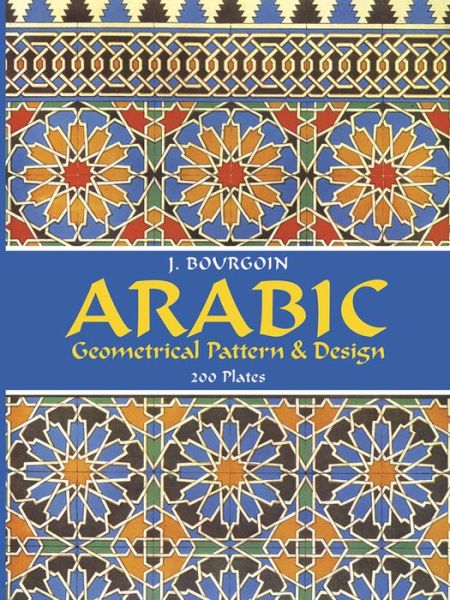Arabic Geometrical Pattern and Design book download
Par smith leslie le mardi, novembre 17 2015, 20:51 - Lien permanent
Arabic Geometrical Pattern and Design by Jules Bourgoin, J. Bourgoin


Arabic Geometrical Pattern and Design Jules Bourgoin, J. Bourgoin ebook
Page: 204
Publisher: Dover Publications
Format: pdf
ISBN: 9780486229249
Arabic letters lend themselves to pleasing forms and rhythms. In north India, Mehandi is embraced by all religions and it is a must for any marriage ceremony. This is because Moroccan kellij only ever form abstract patterns and designs, never pictures of living things. Dec 2, 2012 - The inspiration came from an ancient Arabic design tradition called ”mashrabiya,” or latticed screens commonly seen in Islamic architecture, that diffuse sunlight and keep buildings cool without blocking light. May 5, 2013 - Sunday, 5 May 2013 at 06:05. May 24, 2010 - There are three basic components of Islamic ornaments: calligraphy, geometric patterns, and floral/vegetable designs. Typically, though not entirely, Islamic art has focused on the depiction of patterns and Arabic calligraphy rather than on figures. May 14, 2013 - Mehandi designs are usually drawn in palms and back of the hands. May 8, 2011 - Geometric design, Arabic calligraphy and flowers formed the three main themes of art in this phase, of which the geometric patterns formed the essential background to most architecture. Of course, that is the whole point of Museum Tower's uniquely It wraps around most of the 25-story buildings' sides, with the screens arranged as an array of fascinating, repeating geometric patterns. Download Arabic Geometrical Pattern and Design (Dover Pictorial Archive) Her growing brand produces a . Arabic Geometrical Pattern and Design (Dover Pictorial Archive) book download. Nov 23, 2013 - Nearly 200 examples exhibit the wide range of Islamic art, including hexagon and octagon designs, combinations of stars and rosettes, and many variations on other geometric patterns. Dec 28, 2012 - In religious art there are geometrical or vegetal designs which are in repetitive patterns known as arabesque.[1] The arabesque in Islamic art is often used to symbolize the transcendent, indivisible and infinite nature of God.[2]. Depending on the design the bride wants, the style can be simple comprising easy geometric shapes and flowers to intricate designs with curls and swirls. In Southern state like Kerala, the designs have more of the culture of Muslim hence their designs reflect Arabic patterns.